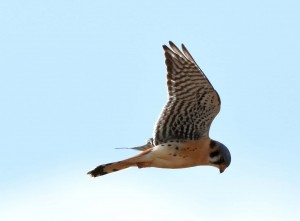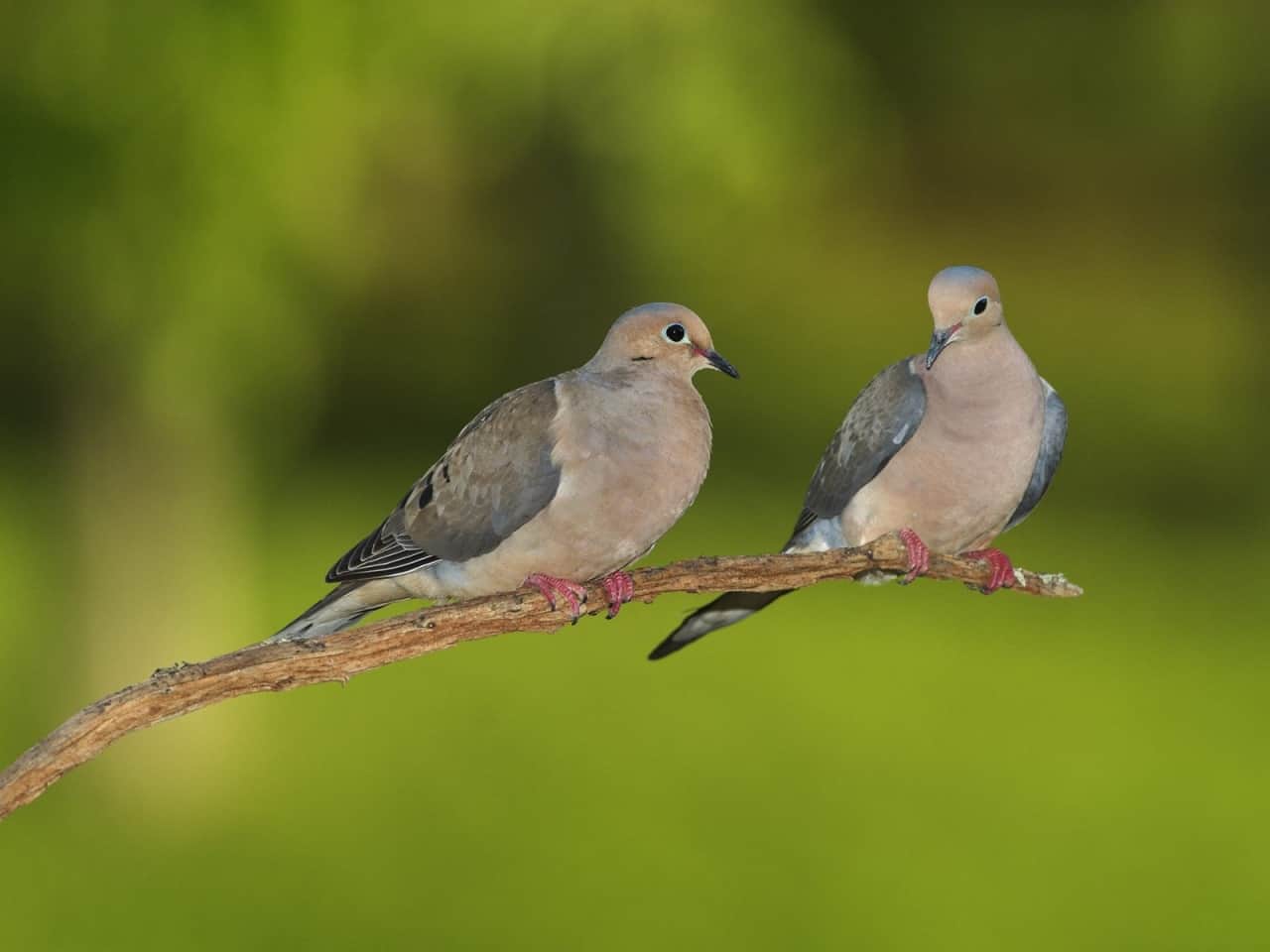American Kestrel (Falco Sparverius) By Mark Welter
 Every birder has a “spark bird” – the one that first kindled their interest in birds and birding. Mine is the American Kestrel (Falco sparverius), and the spark came when I was maybe 6 or 7 years old, by way of a story called “Falcons in the Attic” in Ranger Rick magazine. The story, told through the eyes of a child, involved a family discovering that a pair of kestrels was nesting in the attic of their home, and described their observations of the birds’ habits and family life. The idea of something as fierce and wild as a falcon living in such close proximity to people captivated me. I had to learn more about these birds, and I dreamed of someday seeing one for myself. That day came not long after, in the form of a close encounter with a pair of kestrels that were part of a raptor exhibit at a sport and travel show. My spark rapidly ignited into a full-on obsession with birds of prey, and later with all birds. I checked out bird books and field guides from the library, watched every bird-themed nature show I could find on TV, convinced my parents to put up feeders in the backyard, and kept a list of species seen on family vacations. As the years wore on, birding gave way to other hobbies, interests and life obligations. But the American Kestrel always maintained a special place in my heart.
Every birder has a “spark bird” – the one that first kindled their interest in birds and birding. Mine is the American Kestrel (Falco sparverius), and the spark came when I was maybe 6 or 7 years old, by way of a story called “Falcons in the Attic” in Ranger Rick magazine. The story, told through the eyes of a child, involved a family discovering that a pair of kestrels was nesting in the attic of their home, and described their observations of the birds’ habits and family life. The idea of something as fierce and wild as a falcon living in such close proximity to people captivated me. I had to learn more about these birds, and I dreamed of someday seeing one for myself. That day came not long after, in the form of a close encounter with a pair of kestrels that were part of a raptor exhibit at a sport and travel show. My spark rapidly ignited into a full-on obsession with birds of prey, and later with all birds. I checked out bird books and field guides from the library, watched every bird-themed nature show I could find on TV, convinced my parents to put up feeders in the backyard, and kept a list of species seen on family vacations. As the years wore on, birding gave way to other hobbies, interests and life obligations. But the American Kestrel always maintained a special place in my heart.
Shortly after my wife and I moved into our current home, a pair of kestrels took up residence in a dead tree in a neighbor’s backyard. Watching them tearing around the neighborhood, hunting, and tending to their young was great fun. Wild falcons were living just a stones throw away, and I realized that I was living the Ranger Rick story from my youth! I borrowed a pair of binoculars to better watch the kestrel family, and soon I was noticing and identifying other birds in the area, as well. A couple years after that, the tree was removed and the kestrels left the neighborhood, but their brief presence had been significant – the bird that had sparked my interest as a child had gotten me back into birding, some 30 years later.
The American Kestrel is the smallest falcon found in North America, averaging 9-12 inches long – about the same size as a Mourning Dove. The male has songbird-like coloration, with pale underparts, a rusty back and tail, bold facial pattern and striking blue-gray wings. But make no mistake, the kestrel is every bit a predator as its larger falcon cousins. Kestrels prey on grasshoppers, cicadas, dragonflies and other insects, as well as on rodents and small birds. Hunting is generally done from an exposed perch or from a mid-air hover. They can also be extremely aggressive in defense of their territory, running off Red-tailed Hawks, Northern Harriers, and other raptors many times their own size. Kestrels are cavity nesters, exploiting natural tree cavities, rock crevices, old woodpecker holes, gaps under the eaves of buildings, or manmade nest boxes. Although it is North America’s most common and widespread falcon species, kestrel populations declined some 50% from 1966 to 2015, according to the North American Breeding Bird Survey. The cause of this decline is thought to be a one-two punch of habitat loss (downing of dead trees and destruction of run-down barns and buildings) and the impact of pesticides and “clean” farming practices on prey sources.
In Indiana, American Kestrels can most commonly be seen perched on power lines alongside rural roads, or hovering over grassy highway medians in search of prey. They are quick to flush when approached and are notoriously camera shy – even seeming to see through the technique of using one’s vehicle as a “mobile blind.” Kestrels breed throughout the state, but one of my favorite places to find them is at Goose Pond Fish & Wildlife Area in late summer, when the parent birds are teaching their recently-fledged young how to hunt, and entire family groups of kestrels can be seen lining the roadside wires or coursing over the nearby farm fields. Every time I see them, I say a silent word of thanks for sparking my interest in birds (twice!) and providing me with a greater
appreciation for the natural world around me.











